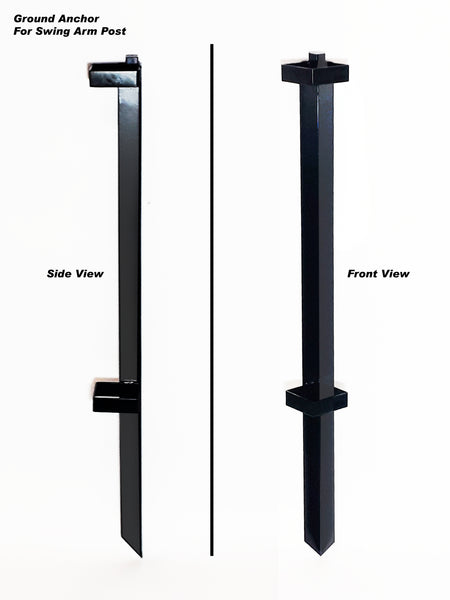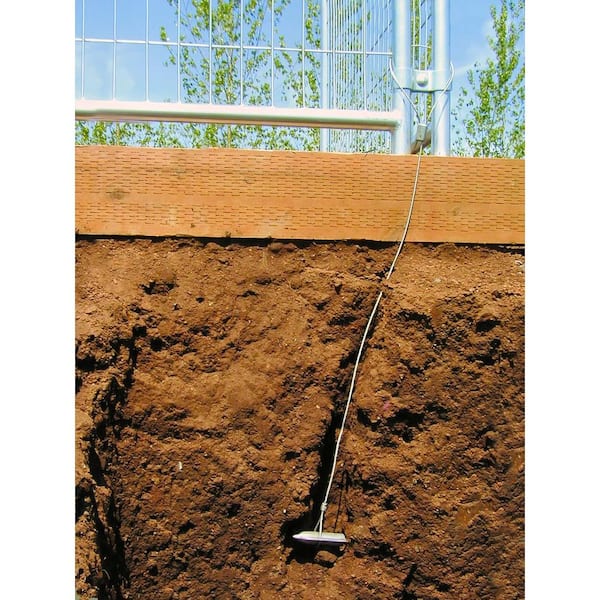Understanding the Different Types of Ground Anchor Systems for Various Uses
Understanding the Different Types of Ground Anchor Systems for Various Uses
Blog Article
Discover the Different Kinds Of Ground Support for Your Following Job
From auger supports, which excel in varied soil problems, to stake anchors developed for momentary setups, the choices are numerous. In addition, concrete and screw supports present unique advantages in details situations, while deadman supports are tailored for applications needing resistance to side forces.

Auger Anchors
Auger supports are a preferred selection in various construction and landscape design tasks due to their unique style and efficient anchoring capacities. These supports include a helical screw-like shaft that is driven into the ground, enabling a secure and stable hold. The spiral design helps with easy installation and optimizes resistance versus lateral forces, making auger anchors particularly efficient in applications such as fence, momentary structures, and disintegration control.
The setup process of auger supports is fairly straightforward. They can be by hand or mechanically mounted, depending on the dimension and required depth. This flexibility enables their usage in diverse dirt problems, from sandy to clayey terrains. Additionally, auger supports can be easily eliminated and reused, which includes in their cost-effectiveness and sustainability.
Among the considerable benefits of auger anchors is their capacity to disperse loads uniformly across the bordering soil, minimizing the risk of dirt disturbance and lessening ecological impact. Additionally, they are much less at risk to loosening up or heaving over time contrasted to conventional securing techniques. Auger anchors are an outstanding option for projects needing trusted and durable anchoring remedies.

Stake Anchors
When it pertains to safeguarding structures in a selection of exterior applications, risk supports offer a reliable and straightforward solution. These anchors are usually created from sturdy products such as steel or aluminum, made to hold up against ecological anxieties while giving optimal stability. Their easy layout permits quick setup, making them an optimal choice for temporary or irreversible anchoring needs.
Stake supports are specifically beneficial in securing camping tents, covers, and other lightweight frameworks against wind and weather condition. They function by being driven into the ground at an angle, producing a solid hold that withstands pull-out pressures - Ground Anchor. The efficiency of risk supports relies on several aspects, consisting of soil kind, dampness material, and the angle of setup
For included protection, several stake supports come with add-on points for bands or ropes, allowing for stress modifications as necessary. In applications such as landscaping or building and construction, they can efficiently maintain equipment or structures on uneven terrain. Generally, stake supports provide a flexible and affordable remedy for protecting various outside setups, making them a recommended choice for professionals and do it yourself fanatics alike.
Concrete Anchors
Concrete supports give a robust remedy for protecting structures to concrete surfaces, ensuring security and security in various applications. These anchors are necessary for jobs varying from residential building and constructions to large-scale industrial installments. They are available in various types, consisting of growth anchors, sticky anchors, and undercut supports, each developed for particular tons needs and environmental problems.
Glue supports make use of high-strength epoxy or resin to bond the support to the concrete, using premium load-bearing capacities, specifically in broken concrete situations. Undercut supports develop a distinct shape within the concrete, giving outstanding holding power, specifically in applications where tensile lots are prevalent.
When implemented properly, concrete supports substantially enhance the architectural stability of various jobs, making them indispensable in contemporary building methods. Understanding the particular demands of your project will certainly assist in selecting the best kind of concrete support for the job.
Screw Anchors

Screw anchors are a versatile fastening solution that can be effectively employed in a variety of applications where typical concrete supports may not be sufficient. These anchors include a helical layout that allows them to be quickly driven into the ground, making them suitable for use in dirt and various other substrates. Their one-of-a-kind structure provides superb holding power and resistance to pull-out pressures, making them appropriate for numerous projects, from landscaping to architectural support.
One of the key advantages of screw supports is their simplicity of installation. They require marginal tools and can typically be installed without the look what i found requirement for excavation, which saves this page both time and labor expenses. Additionally, screw supports can be removed and reused, providing a sustainable solution for momentary applications.
Screw anchors are especially beneficial in areas where soil conditions are challenging, such as sandy or loose dirts. Their capacity to be mounted at varying depths permits customization based on certain task needs. In general, screw supports offer a reliable and trusted securing approach, making them a superb selection for engineers and contractors seeking reliable remedies for their jobs.
Deadman Anchors
Deadman supports function as a durable remedy for supporting frameworks in difficult conditions, especially where conventional securing techniques may fall short. These supports are composed of huge, hefty items buried underground, which create resistance versus lateral pressures. The layout usually involves a straight component, such as a block of concrete or a metal plate, buried in the dirt, to which bands or cable televisions are connected.
The performance of deadman anchors hinges on their ability to disperse tons over a larger area, reducing the danger of failing in unsteady dirt conditions. They are especially advantageous in applications such as retaining wall surfaces, momentary structures, and incline stabilization, where soil motion can compromise the honesty of the framework.
Setup of deadman supports calls for cautious planning to ensure they are positioned at the proper depth and positioning, maximizing their load-bearing capability. While they might need even more labor and product than light-weight supports, their dependability in negative problems makes them very useful for lasting projects. Moreover, deadman anchors are functional and can be adjusted to different applications, making them a best selection for engineers encountering imp source distinct obstacles in their jobs.
Final Thought
Auger anchors excel in varied soil problems, while risk supports fit temporary applications. For concrete surfaces, development and adhesive anchors provide trusted choices, and screw anchors supply flexibility in tough terrains.
Additionally, concrete and screw anchors existing one-of-a-kind advantages in certain situations, while deadman anchors are customized for applications requiring resistance to lateral pressures - Ground Anchor.Auger anchors are a prominent option in different building and construction and landscaping jobs due to their unique design and efficient anchoring abilities. They come in various kinds, including growth supports, glue anchors, and undercut anchors, each developed for details load demands and ecological problems
Sticky anchors utilize high-strength epoxy or resin to bond the anchor to the concrete, supplying premium load-bearing capacities, particularly in broken concrete scenarios. Overall, screw supports supply a reputable and effective anchoring approach, making them an excellent selection for designers and professionals seeking effective solutions for their tasks.
Report this page